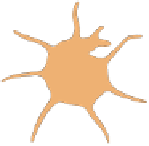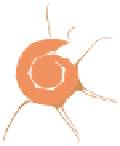Travel Reference
In-Depth Information
Bonaire
Overview
Divers and eco-tourists cherish this
IN THIS CHAPTER
A Brief History 144
Official Business 147
Unique Celebrations 148
Getting to Bonaire 149
Leaving Bonaire 151
Getting Around 151
Touring the Island 154
Adventures on Water 164
Adventures on Land
quiet, sun-drenched island for its su-
perior underwater world and arid natural
beauty. In 1979, the Bonaire government
declared the entire coastline and all the
surrounding waters a protected marine re-
serve. As a result, anchoring is banned
around its coral reefs, divers must adhere
to a series of nature-sustaining rules, and
boats cannot dump ballast water within 12
miles of the island's coast.
Over the years Bonaire has consistently
ranked as one of the world's top snorkeling
and scuba destinations and has won eco-
tourism awards for its superb preservation
of nature. Development is rigorously con-
trolled and intentionally slow-paced.
Although it's larger than Aruba, Bonaire has a smaller population
(15,000± verses 89,000±) and entertains fewer visitors (60,000± compared
to 600,000± annually).
There are no fast-food chains, golf courses, or high-rise hotels. Only sparse
vegetation grows on the rain-starved land, but beautiful nature flourishes
everywhere. Graceful pink flamingos feed near stunning salt pans, lazy
iguanas sprawl atop oversized limestone boulders, and frisky wild don-
keys graze on untamed patches of scrub brush. Some 190 species of birds
live and breed in the 13,500-acre national park that covers the entire
northwest end of the island. A half-mile off the western shore, turtles and
various waterfowl nest undisturbed on Klein Bonaire, a little spit of flat,
rocky, uninhabited land that is destined to become another Antilles
National Park.
The 15,000 residents of Bonaire are committed to preserving the island's
colorful Dutch heritage and intrinsic beauty. Most of the friendly inhabit-
ants speak several languages, including the official Dutch and colloquial
Papiamentu (Papiamento on Curaçao and Aruba). Visitors are warmly
welcomed and offered a variety of accommodations, restaurants, and
activities.
Kralendijk
(krawl-in-dike), is the capital and only sizeable town. It's nes-
tled into the sheltered western curve of the croissant-shaped island and
184
Shopping
185
Where to Stay
187
Where to Eat
194
Nightlife
203
Island Facts
& Contacts
206











































































Search WWH ::

Custom Search